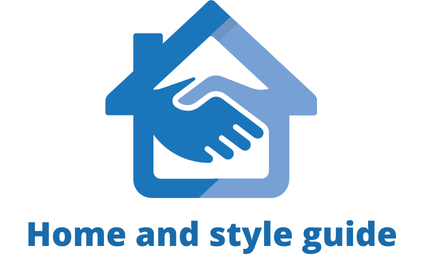Radon gas, an invisible and odorless threat, poses risks to your health, especially in UK homes. Understanding how to detect radon levels is essential for ensuring a safe living environment. This guide equips you with practical knowledge on radon measurement, sources, and potential remedies. Take control of your home's safety by learning effective methods for radon detection and the steps to mitigate any issues. Don't let this silent danger lurk in your home – empower yourself with the right tools and information.
Understanding Radon Gas
Radon gas is a colourless, odourless, and tasteless radioactive gas that naturally occurs from the decay of uranium in soil, rock, and water. It can infiltrate homes through cracks in floors, walls, or foundations, posing a significant risk to indoor air quality. In the UK, radon levels are a concern, particularly in areas with high uranium content in the ground.
A voir aussi : What’s the process for appealing a parking ticket in Manchester in 2023?
Health Risks
Radon gas is the second leading cause of lung cancer after smoking. Prolonged exposure to elevated radon levels increases the risk of developing lung cancer, making it crucial to monitor and manage radon levels in homes. The UK Health Security Agency recommends testing indoor air quality to ensure radon levels remain below the action level of 200 Bq/m³.
Sources of Radon in UK Homes
In the UK, common sources of radon include:
Avez-vous vu cela : How to apply for a UK Ancestry Visa for Commonwealth citizens with British ancestry?
- Soil and rock beneath buildings
- Building materials containing natural uranium
- Water supply from wells or underground sources
Understanding these sources helps homeowners take preventive measures, such as improving ventilation and sealing entry points, to maintain safe indoor air quality. Regular testing and mitigation efforts can significantly reduce the health risks associated with radon exposure.
Health Implications of Radon Exposure
Understanding the health effects of radon exposure is crucial for safeguarding your well-being. Radon is a known carcinogen, and its link to lung cancer is well-documented. According to the UK Health Security Agency, radon exposure is the second leading cause of lung cancer after smoking, responsible for approximately 1,100 deaths annually in the UK. This statistic underscores the importance of monitoring and mitigating radon levels in your home.
Vulnerable Populations and Risk Factors
Certain groups are more susceptible to the adverse effects of radon. Smokers, for instance, face a significantly higher lung cancer risk when exposed to elevated radon levels. Additionally, individuals with a family history of lung cancer or those with pre-existing respiratory conditions are at greater risk. Understanding these risk factors can help you take proactive measures to protect yourself and your loved ones.
Exposure Levels and Health Risks
The health risks associated with radon depend on the level and duration of exposure. Prolonged exposure to high radon concentrations increases the likelihood of developing lung cancer. Therefore, regular testing and adherence to safety guidelines are essential to reduce exposure levels and prevent health complications. Prioritising indoor air quality through effective radon mitigation strategies can significantly lower your risk.
How to Detect Radon Levels
Detecting radon levels in your home is crucial for maintaining safe indoor air quality. Various measurement techniques are available to identify radon concentrations effectively. These methods range from short-term to long-term testing, each serving different purposes.
Overview of Radon Detection Methods
Radon testing can be conducted using DIY kits or by hiring professionals. DIY kits are widely accessible and offer a cost-effective way to get an initial reading. However, professional testing provides more accurate and reliable results, especially in areas with fluctuating radon levels.
Short-term vs. Long-term Radon Testing
Short-term radon tests typically last from a few days to 90 days and provide quick results. They are ideal for initial screenings but may not reflect yearly averages. Long-term tests, which last more than 90 days, offer a comprehensive view of radon exposure over time, capturing seasonal variations in radon levels.
Importance of Professional vs. DIY Testing
While DIY radon testing is convenient, professional testing ensures precision and thoroughness. Professionals use advanced equipment and follow strict protocols to measure radon levels accurately. For homeowners seeking peace of mind, investing in professional radon testing is a prudent choice, especially in high-risk areas.
Recommended Radon Testing Kits for UK Homes
Selecting the right radon testing kits is essential for ensuring accurate measurements of indoor radon levels. In the UK, several trusted kits are available, each with unique features catering to different needs.
Trusted Radon Testing Kits
- Home Radon Test Kit: Known for its simplicity and reliability, this kit provides quick results and is ideal for short-term testing.
- Long-Term Radon Detector: Offers comprehensive insights over extended periods, capturing seasonal variations effectively.
- Professional Radon Test Kit: Utilised by experts, this kit ensures precision and is recommended for high-risk areas.
Key Features to Consider
When choosing a radon testing kit, consider the following features:
- Accuracy: Look for kits with a proven track record of delivering precise results.
- Ease of Use: Kits should be user-friendly, with clear instructions for setup and interpretation.
- Certification: Ensure the kit is certified by relevant authorities for credibility and reliability.
User Testimonials and Reviews
Many users praise the Home Radon Test Kit for its ease of use and quick results. The Long-Term Radon Detector receives commendations for its detailed analysis over time, while the Professional Radon Test Kit is favoured for its accuracy in high-risk zones.
Interpreting Radon Test Results
Understanding your radon test results is crucial for ensuring a safe living environment. Radon levels are measured in Becquerels per cubic metre (Bq/m³), which indicates the amount of radioactive decay occurring within a specific volume. This unit helps quantify the concentration of radon in your home, providing a clear picture of your indoor air quality.
Safe vs. Unsafe Radon Levels
In the UK, the action level for radon is 200 Bq/m³. Levels below this threshold are generally considered safe, whereas levels above it warrant immediate attention. If your radon test results reveal concentrations exceeding 200 Bq/m³, it's essential to take action to reduce these levels and mitigate potential health risks.
Next Steps Based on Test Results
Once you've received your radon test results, the next steps depend on the measured radon levels. For levels below 200 Bq/m³, regular monitoring is advisable to ensure they remain within safe limits. If levels exceed 200 Bq/m³, implementing mitigation measures such as improving ventilation, sealing entry points, or installing a radon sump system is recommended. These actions help reduce radon concentrations and safeguard your health.
Legal Regulations and Guidelines for Radon in the UK
Understanding radon regulations in the UK is essential for homeowners and landlords to ensure safety and compliance. The UK has established guidelines to manage radon levels, aiming to minimise health risks associated with this radioactive gas.
Overview of UK Regulations
The UK government has set an action level of 200 Bq/m³ for radon concentrations in residential properties. This benchmark serves as a threshold for initiating mitigation measures when exceeded. Regulations require radon testing in areas identified as radon-affected, particularly in new buildings and extensions.
Responsibilities of Homeowners and Landlords
Homeowners and landlords are responsible for monitoring radon levels and implementing mitigation strategies if necessary. Landlords must ensure rental properties comply with safety standards, providing tenants with information about radon risks and testing results. Regular testing and maintenance are crucial for compliance.
Resources for Compliance and Further Information
Several resources are available to assist with radon compliance. The UK Health Security Agency offers guidance on testing and mitigation strategies. Additionally, local councils provide support for homeowners in radon-affected areas. Engaging with professional radon mitigation services ensures adherence to UK guidelines and enhances indoor air quality.
Mitigation Strategies for High Radon Levels
Addressing high radon levels is crucial for maintaining home safety and ensuring a healthy living environment. Effective radon mitigation methods focus on reducing radon concentrations to safe levels, protecting you and your family from potential health risks.
Effective Mitigation Methods
Several reduction techniques can significantly lower radon levels in your home. Installing a radon sump system is one of the most effective solutions, especially in homes with basements. This system actively draws radon from beneath the property, venting it outside. Additionally, improving ventilation by using fans and vents can help disperse radon and reduce indoor concentrations.
Professional Radon Mitigation Services
Engaging professional radon mitigation services is often recommended for comprehensive and precise results. Experts have the knowledge and equipment to assess your home's specific needs, ensuring the most effective reduction techniques are implemented. Professional services provide peace of mind by guaranteeing that radon levels are reduced to safe limits.
DIY Options for Homeowners
For those interested in DIY solutions, sealing entry points such as cracks in floors and walls can help minimise radon infiltration. However, it's essential to combine DIY efforts with professional advice to ensure thorough mitigation. Regular testing post-mitigation is crucial to confirm the effectiveness of the chosen strategies.
Resources for Further Reading and Support
Navigating the complexities of radon can be daunting, but numerous radon resources and support organisations are available to assist you. These entities provide vital information, helping you make informed decisions about managing radon in your home.
Organisations and Websites
Several organisations offer comprehensive information on radon, including the UK Health Security Agency and the British Lung Foundation. These bodies provide guidelines, testing recommendations, and mitigation strategies. Their websites host valuable resources, including research studies and practical advice on reducing radon exposure.
Recommended Literature and Studies
For those seeking in-depth knowledge, various scientific studies and literature on radon are available. Publications from the World Health Organization and Environmental Protection Agency offer insights into radon risks and mitigation techniques. These materials are crucial for understanding radon's impact on health and the environment.
Community Support Groups and Forums
Engaging with community support groups can be beneficial for individuals affected by radon. Online forums and local groups provide a platform for sharing experiences, advice, and support. Connecting with others facing similar challenges can offer reassurance and practical tips for managing radon levels effectively.
Personal Experiences and Testimonials
Understanding how radon impacts individuals and communities can be enlightening. User experiences often highlight the importance of radon testing and the transformative effect it can have on community health.
Radon Testing Stories
Homeowners who have undergone radon testing share compelling stories. One household discovered alarmingly high radon levels after routine testing, prompting immediate action. Their experience underscores the significance of regular testing and community awareness. As a result, their neighbourhood initiated a radon awareness campaign, significantly improving local health outcomes.
Community Awareness
The impact of radon awareness on community health is profound. In one case, a local council organised workshops to educate residents about the dangers of radon. This initiative not only increased testing rates but also fostered a sense of collective responsibility. Communities that prioritise radon awareness often see a marked decrease in radon-related health issues.
Lessons Learned
Personal experiences with radon mitigation reveal valuable lessons. Many individuals report that engaging with professional services ensures effective radon reduction. Moreover, sharing these experiences encourages others to take proactive measures. By learning from others' stories, communities can enhance their collective safety and well-being.
















